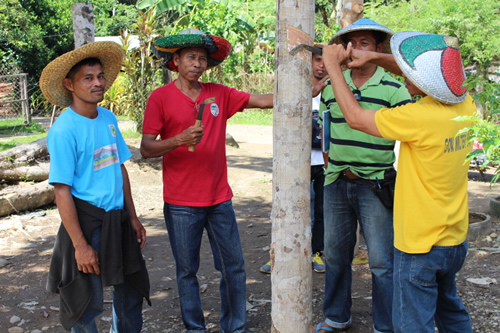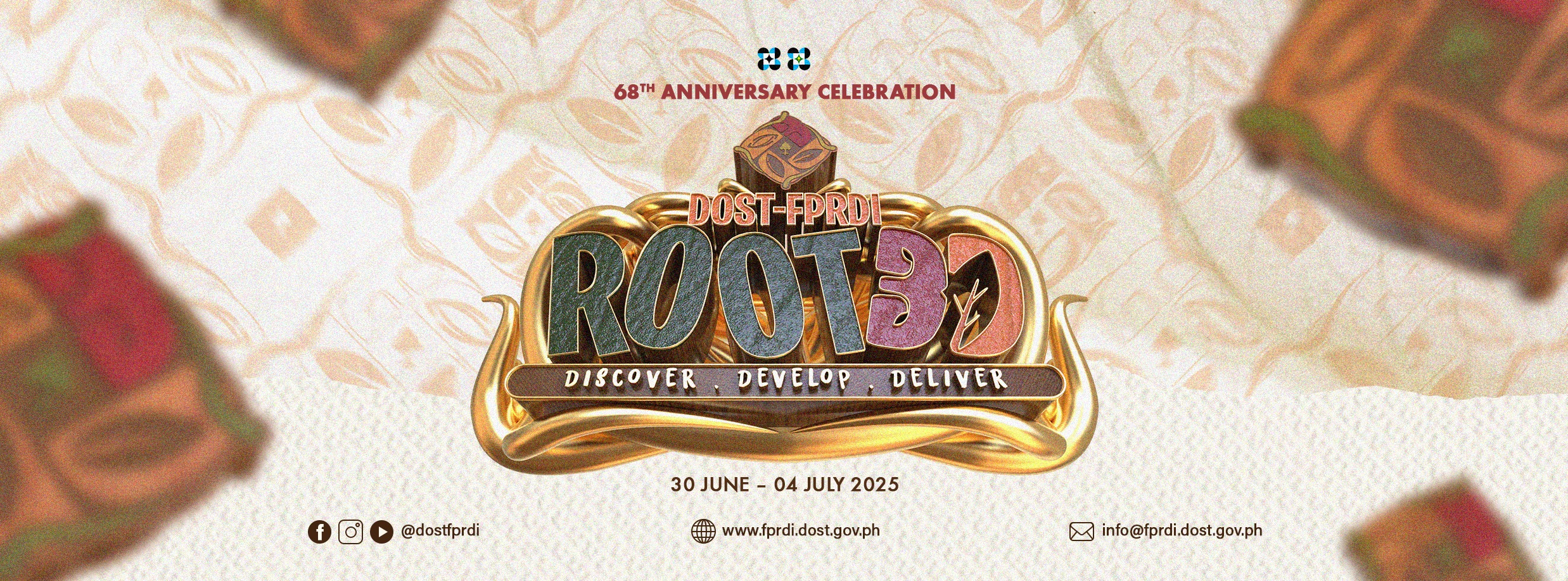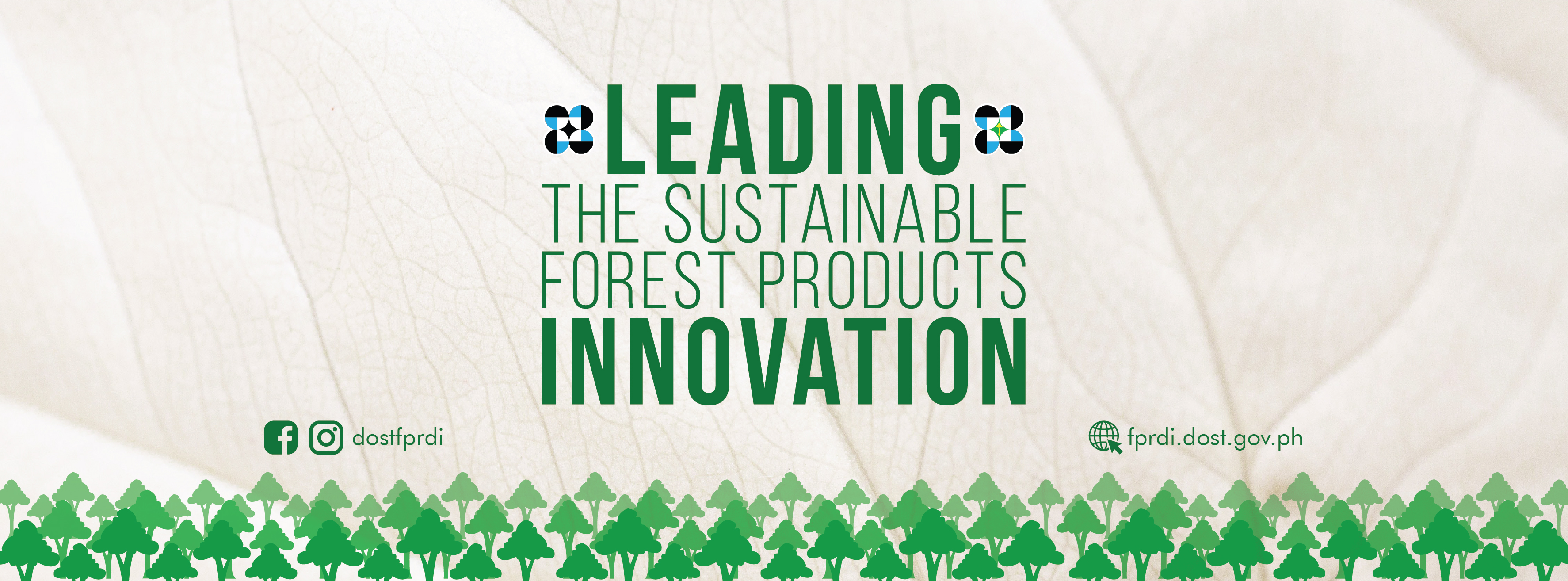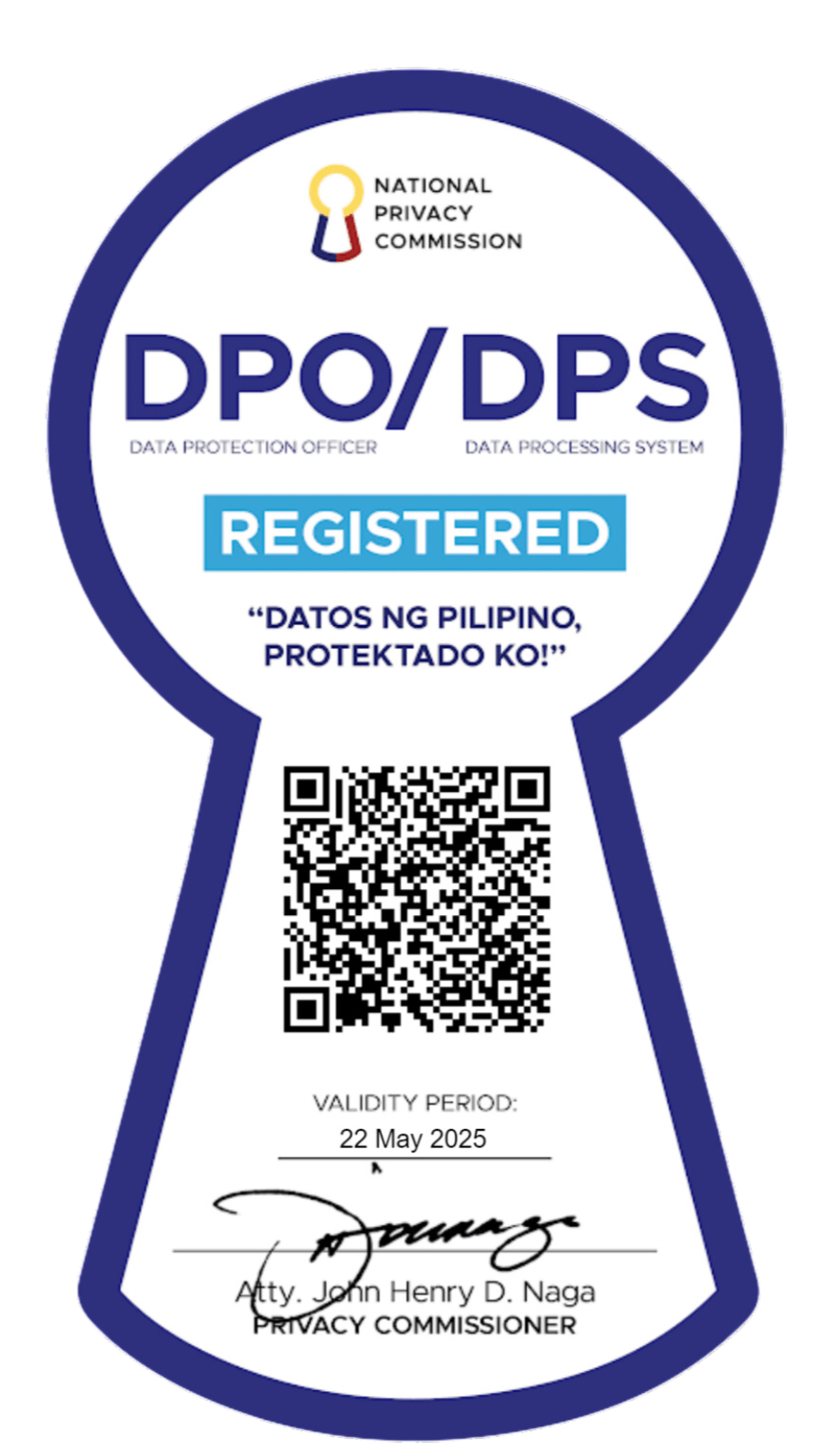
|
| Small farmers from Zamboanga Sibugay learn how to harvest the sap of rubber trees. |
Stakeholders of the country’s rubber sector have a reason to smile these days. Rubber farmers and tappers in Zamboanga Sibugay have recently learned the right way to plant and harvest natural rubber.
Their training courses – considered a breakthrough in the industry – were part of a recently completed project of the Department of Science and Technology – Forest Products Research and Development Institute (DOST-FPRDI) which aimed to boost local rubber production.
Grown in plantations in tropical countries, the rubber tree yields inside its bark a sticky, milky sap that is gathered once the tree matures. Tappers make a cut in the trunk to harvest the sap (called latex) and let the tree live on. Once it gels into a semi-solid state, the coagulum is processed into technically specified rubber or TSR. TSR is used in many products and is the main material for rubber tires.
According to DOST-FPRDI’s Engr. Belen B. Bisana, “Rubber trees are grown in 217,000 hectares all over the country, but mostly in Mindanao. Of the 450,000 metric tons of rubber produced in 2014, about half came from the Zamboanga provinces. Most of the rubber in this region are grown by small farmers who lack the skills to properly produce and harvest the commodity. This has resulted in various malpractices that have severely stunted the growth of the industry over the years.”
“Two years after, the training has proven empowering to the trainees,” Engr. Bisana reports. “Twenty-five tappers and 25 farmers have been certified by the Technical Education and Skills Development Authority (TESDA). Their new skills now allow them to establish nurseries, increase their latex yield and come up with quality coagulum, as well as conserve their rubber trees. These have led to higher income and created new jobs for men and women farmers.”
“Likewise, as a result of the training, a course in rubber production is now being offered in senior high schools in Zamboanga Sibugay, and DOST-FPRDI seeks to educate rubber tappers in other areas through a project funded by DOST’s Philippine Council for Agriculture, Aquatic and Natural Resources Research and Development (PCAARRD). Equipping people with the right skills has a multiplier effect on their local communities because rubber farming and harvesting are largely family-based occupations," explains Bisana.
"Our goal is to boost the rubber sector's growth, so that the country’s annual average yield of 1.28 kilos of dry rubber per hectare will be at par with that of our ASEAN neighbors' 1.80 kilos. The industry has so much more room to grow, considering the booming world market. This is something we must take advantage of," she concludes.
The project was funded by DOST-Grants-In-Aid (GIA) and supported by the Department of Education (DepEd)-Zamboanga Sibugay, Department of Trade and Industry (DTI) Region IX and TESDA-Region IX.#











